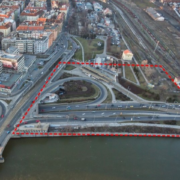“Modern architecture in Prague cannot end with the Dancing House. We don’t want to turn Prague into an open-air museum. I would love to see more buildings with global impact built here, and I believe that the new concert hall could be one of those buildings,” says Zdeněk Hřib, Mayor of Prague.
“The prestige and expertise of the Henning Larsen-led consortium from similar projects around the world is a guarantee of quality for the feasibility study, which will guide future decisions about this project. Prague not only needs a modern concert hall, Prague deserves it,” said Petr Hlaváček, Deputy Mayor responsible for territorial development of the capital city.
Prague chose to have a detailed feasibility analysis prepared due to the project’s size and complexity. The plan to build a new concert hall in Prague dates to 2010 (although the idea was already entertained in the 1930s), with all political representations of the capital city gradually warming up to the idea. The feasibility analysis will be an important first step in fulfilling this vision.
If it moves forward, the construction of the Vltava Philharmonic should also trigger the gradual revitalization of the entire Bubny–Zátory area. The city wants to transform this neglected area into a new city neighborhood and a new center for the capital, attractive to both residents and tourists.
Under the preliminary schedule, construction could start as early as 2027, with completion planned for 2032. The total investments required have not yet been precisely calculated, though the anticipated costs should also come from the feasibility analysis.
The existing concert halls in Prague– Smetana Hall at the Municipal House and Dvořák Hall at Rudolfinum– do not meet concert hall standards for the twenty-first century. The last concert hall was built in Prague over 100 years ago (Smetana Hall in 1912).







